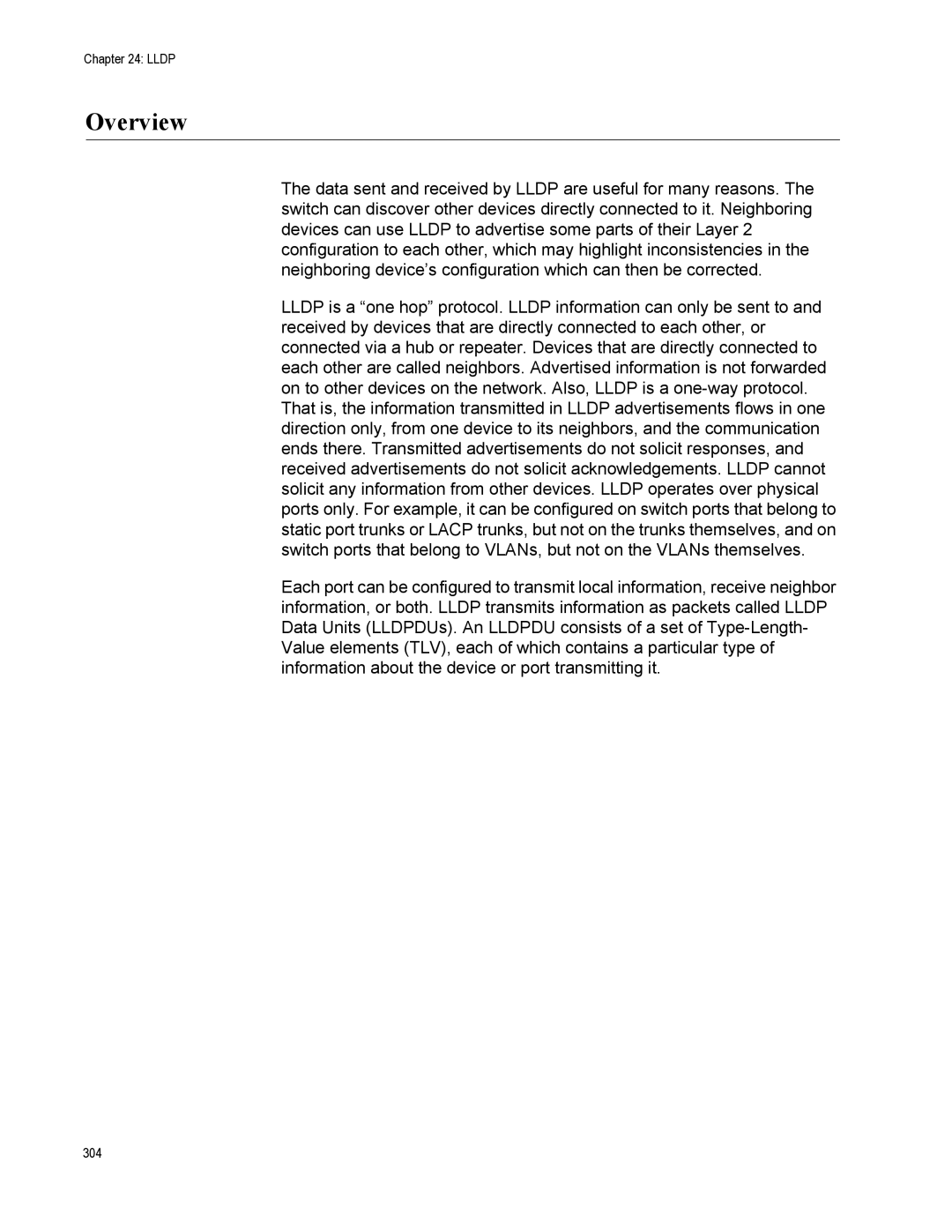Chapter 24: LLDP
Overview
The data sent and received by LLDP are useful for many reasons. The switch can discover other devices directly connected to it. Neighboring devices can use LLDP to advertise some parts of their Layer 2 configuration to each other, which may highlight inconsistencies in the neighboring device’s configuration which can then be corrected.
LLDP is a “one hop” protocol. LLDP information can only be sent to and received by devices that are directly connected to each other, or connected via a hub or repeater. Devices that are directly connected to each other are called neighbors. Advertised information is not forwarded on to other devices on the network. Also, LLDP is a
Each port can be configured to transmit local information, receive neighbor information, or both. LLDP transmits information as packets called LLDP Data Units (LLDPDUs). An LLDPDU consists of a set of
